Abstract
The study of serum from a patient with C2 deficiency is described. The patient had an episode of pneumococcal meningitis at 5 mo of age with seizures and transient hemiparesis and apparent purpuric skin lesions. He was first admitted to the University of Minnesota Hospitals at 10 yr of age following the discovery of proteinuria accidentally by his mother. Since then he has been admitted repeatedly to this hospital with numerous clinical findings including arthralgia, recurrent abdominal pain, proteinuria, membranous nephropathy, malar butterfly rash, seizures, personality aberrations, and recurrent fever. In June 1971, the patient developed positive DNA and DNP antibodies and positive LE cells. When the C profile was studied before and after recognition of lupus, C1q, C1s, and C4 dropped. C3 levels were elevated as were C5, C6, and C7, C3 proactivator had been reduced in the patient even before he developed lupus. Also because of a traumatic renal biopsy leading to a perirenal hematoma, he required surgery and a blood transfusion. 1 h after blood transfusion, a C2 titer of 23 hemolytic units was detected. Almost immediately levels of C3, C5, C6, and C7 dropped, C8 and C9 remained elevated. The addition of C2 from normal blood permitted dramatic activation of C3.
These findings support the view that the rare deficiency in production of C2 predisposes to serious susceptibility to infection, vascular and mesenchymal disease as well as to renal disease and a lupus syndrome.
Full text
PDF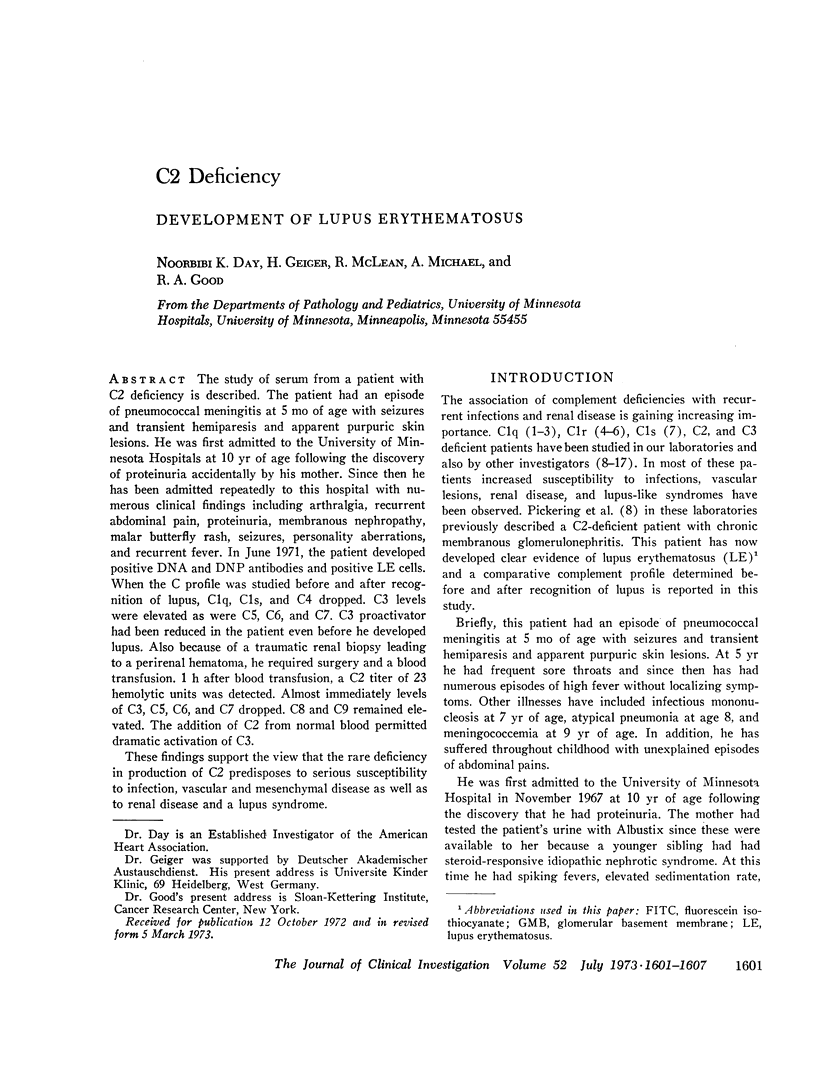
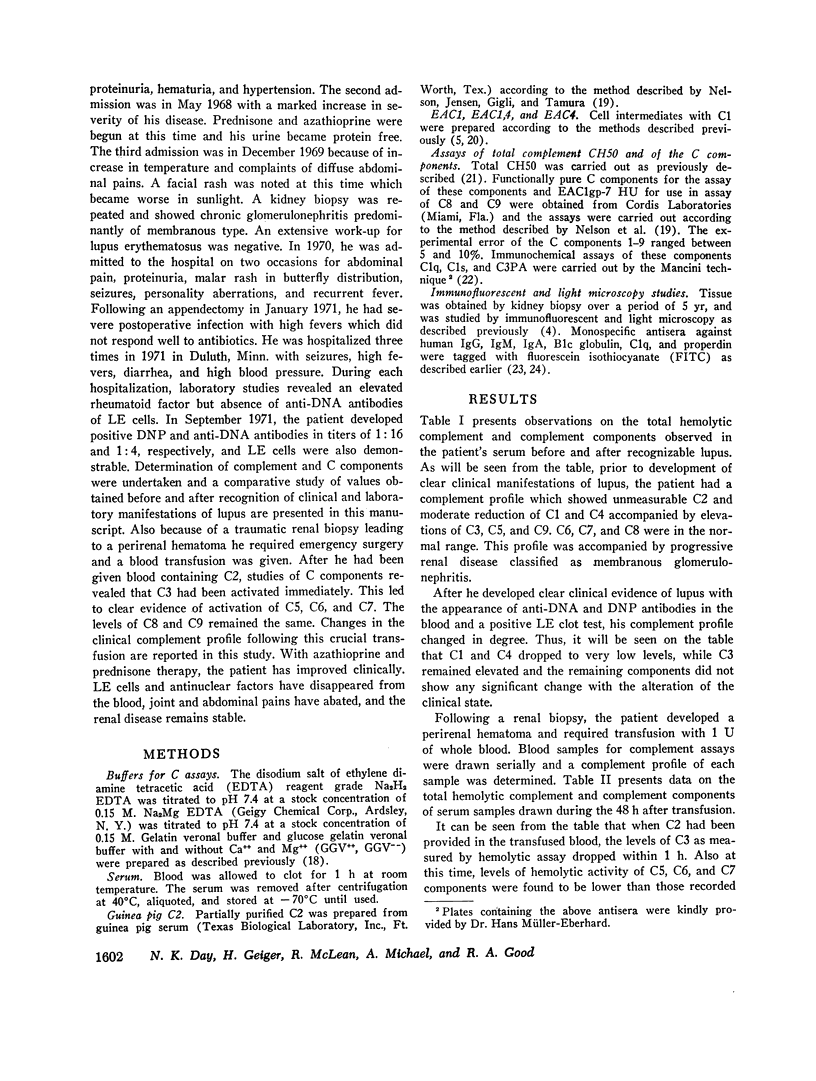
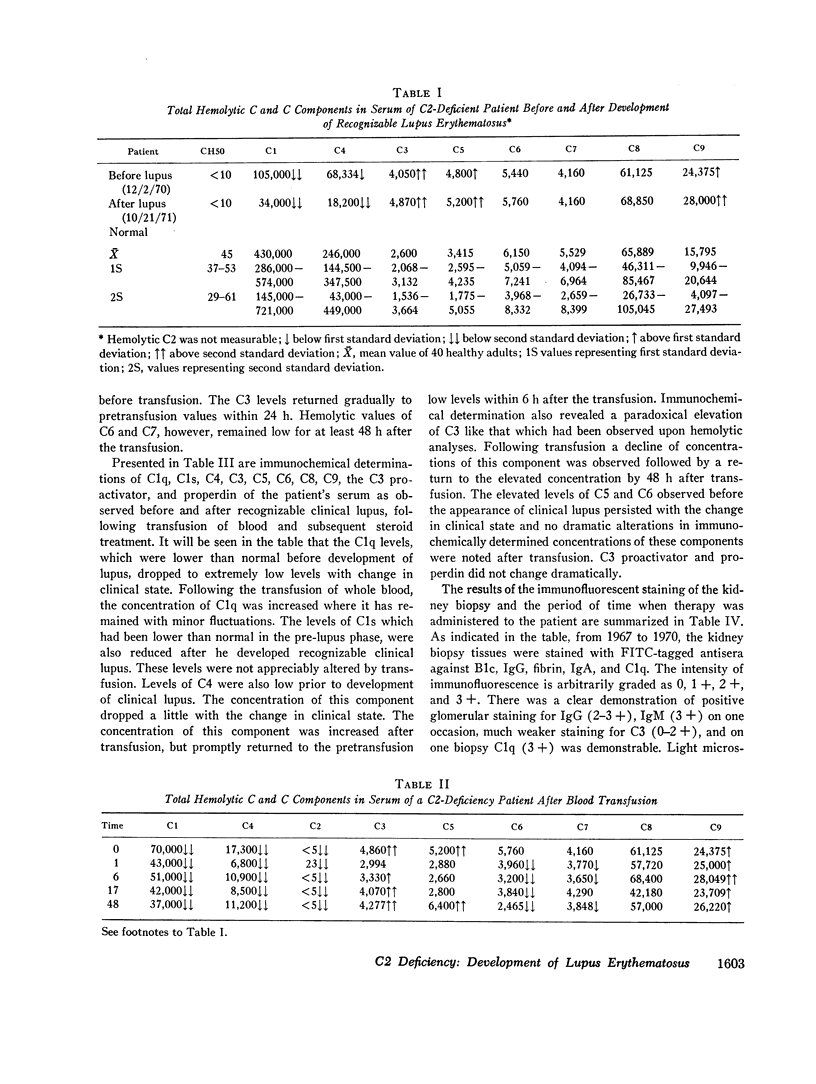
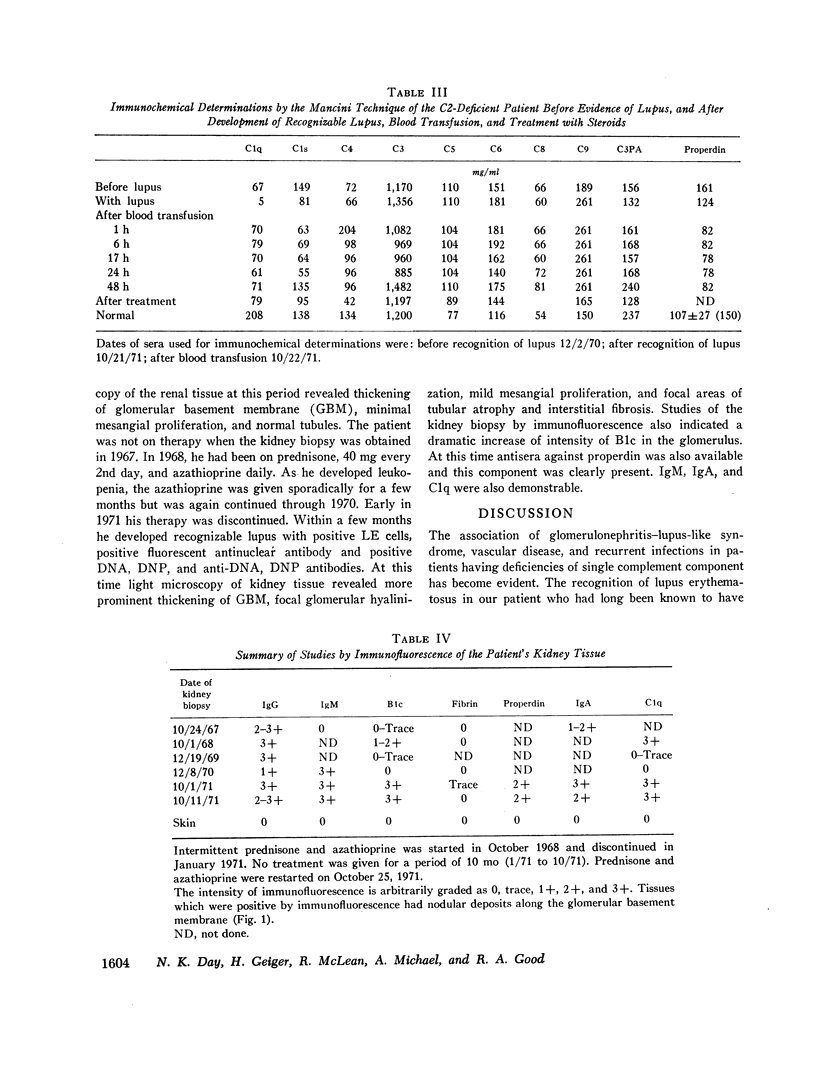
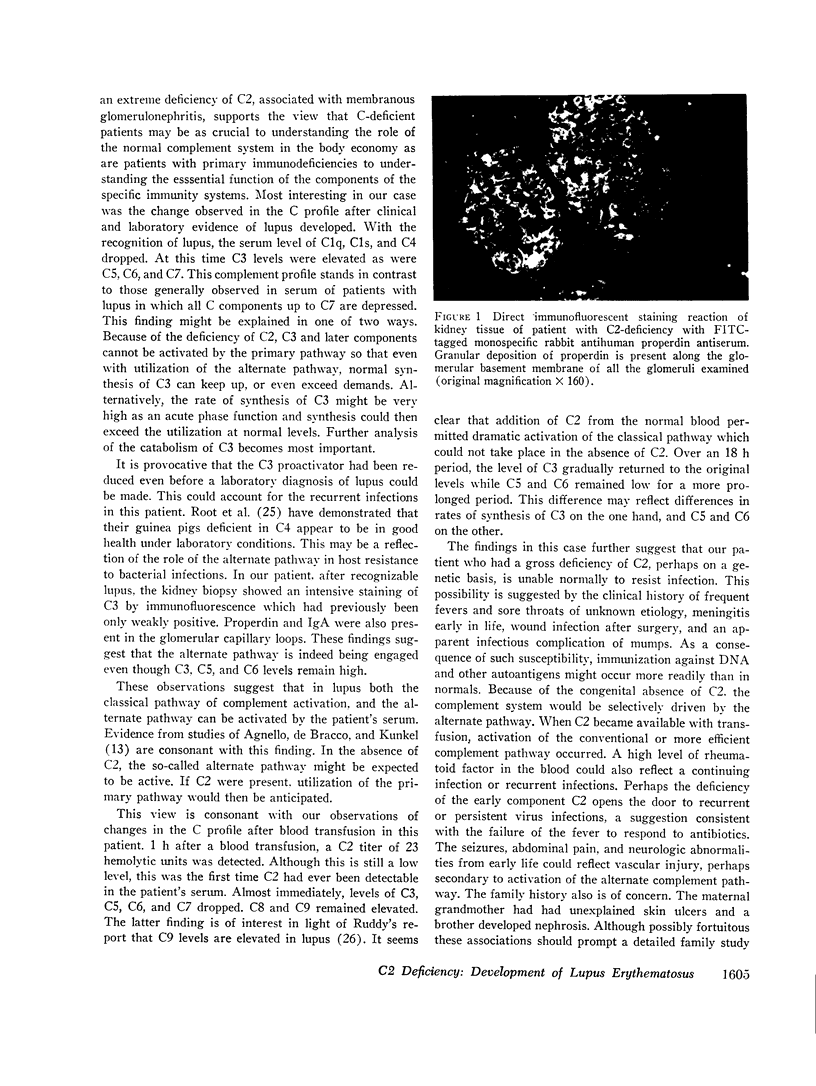
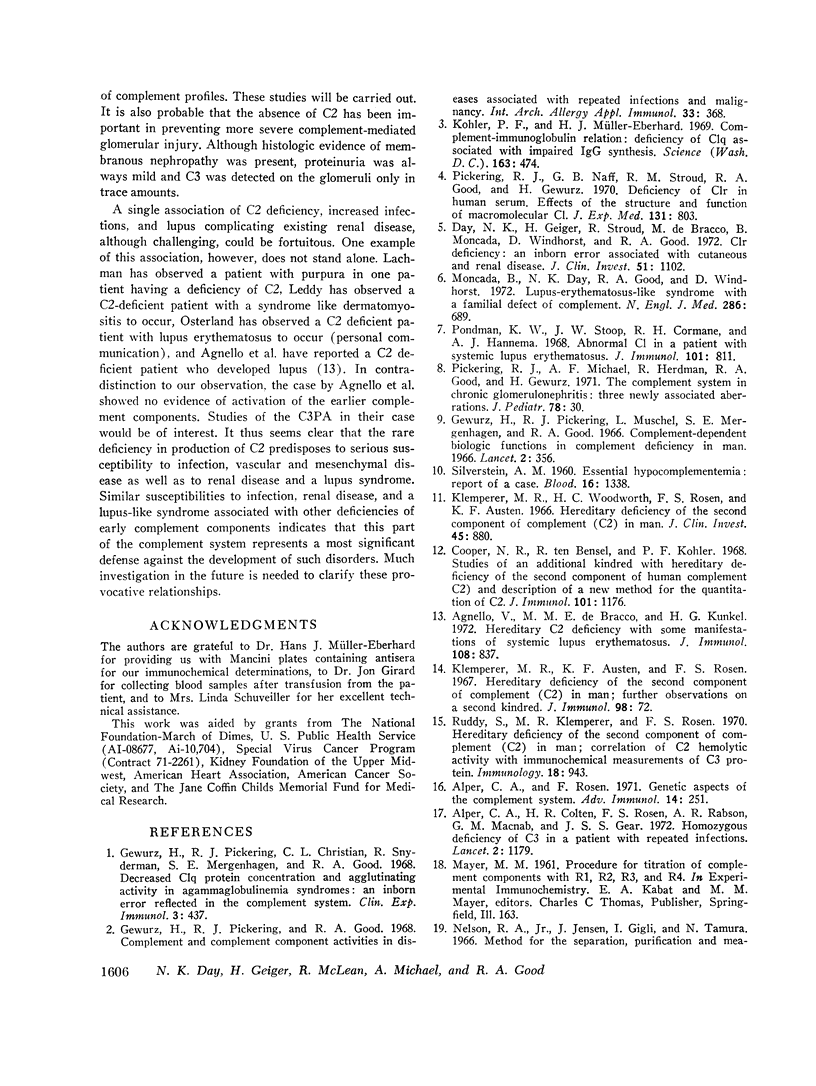
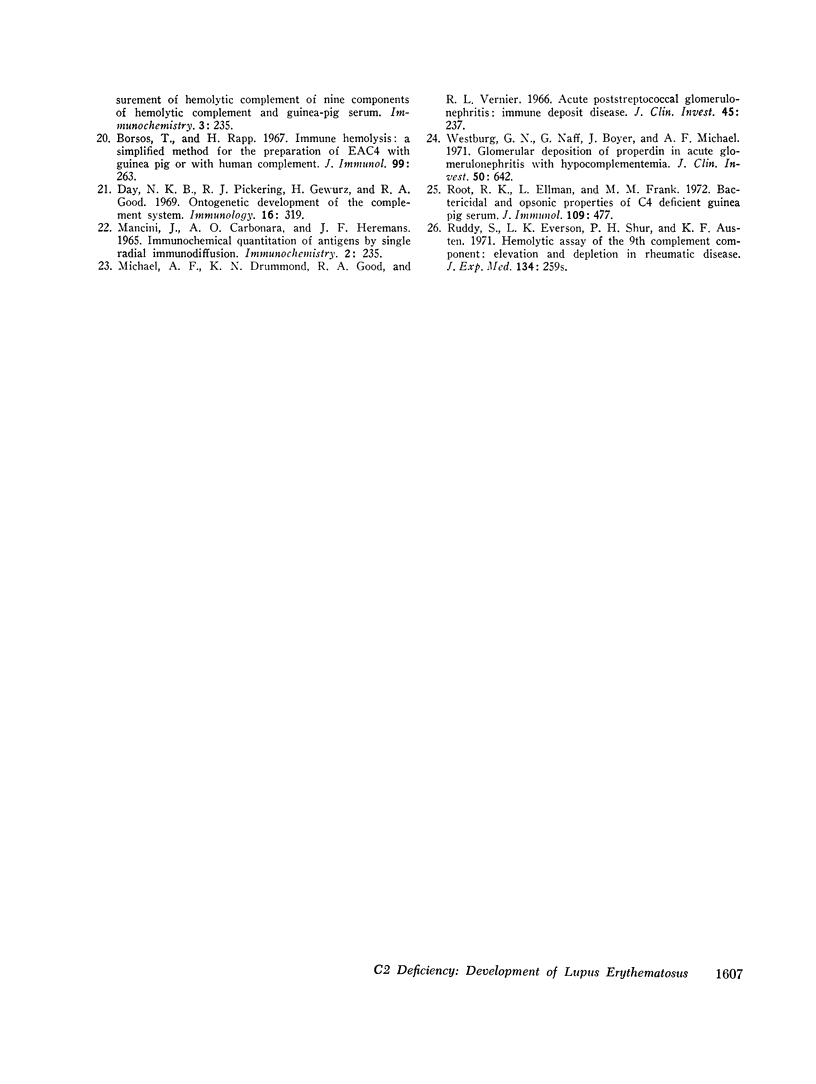
Images in this article
Selected References
These references are in PubMed. This may not be the complete list of references from this article.
- Agnello V., De Bracco M. M., Kunkel H. G. Hereditary C2 deficiency with some manifestations of systemic lupus erythematosus. J Immunol. 1972 Mar;108(3):837–840. [PubMed] [Google Scholar]
- Alper C. A., Colten H. R., Rosen F. S., Rabson A. R., Macnab G. M., Gear J. S. Homozygous deficiency of C3 in a patient with repeated infections. Lancet. 1972 Dec 2;2(7788):1179–1181. doi: 10.1016/s0140-6736(72)92598-6. [DOI] [PubMed] [Google Scholar]
- Alper C. A., Rosen F. S. Genetic aspects of the complement system. Adv Immunol. 1971;14:251–290. doi: 10.1016/s0065-2776(08)60286-2. [DOI] [PubMed] [Google Scholar]
- Borsos T., Rapp H. J. Immune hemolysis: a simplified method for the preparation of EAC'4 with guinea pig or with human complement. J Immunol. 1967 Aug;99(2):263–268. [PubMed] [Google Scholar]
- Cooper N. R., ten Bensel R., Kohler P. F. Studies of an additional kindred with hereditary deficiency of the second component of human complement (C2) and description of a new method for the quantitation of C2. J Immunol. 1968 Dec;101(6):1176–1182. [PubMed] [Google Scholar]
- Day N. K., Geiger H., Stroud R., DeBracco M., Mancaido B., Windhorst D., Good R. A. C1r deficiency: an inborn error associated with cutaneous and renal disease. J Clin Invest. 1972 May;51(5):1102–1108. doi: 10.1172/JCI106902. [DOI] [PMC free article] [PubMed] [Google Scholar]
- Day N. K., Pickering R. J., Gewurz H., Good R. A. Ontogenetic development of the complement system. Immunology. 1969 Mar;16(3):319–326. [PMC free article] [PubMed] [Google Scholar]
- Gewurz H., Pickering R. J., Christian C. L., Snyderman R., Mergenhagen S. E., Good R. A. Decreased C'-1q protein concentration and agglutinating activity in agammaglobulinaemia syndromes: an inborn error reflected in the complement system. Clin Exp Immunol. 1968 Jun;3(5):437–445. [PMC free article] [PubMed] [Google Scholar]
- Gewurz H., Pickering R. J., Good R. A. Complement and complement component activities in diseases associated with repeated infections and malignancy. Int Arch Allergy Appl Immunol. 1968;33(4):368–388. doi: 10.1159/000230053. [DOI] [PubMed] [Google Scholar]
- Gewurz H., Pickering R. J., Muschel L. H., Mergenhagen S. E., Good R. A. Complement-dependent biological functions in complement deficiency in man. Lancet. 1966 Aug 13;2(7459):356–360. doi: 10.1016/s0140-6736(66)92658-4. [DOI] [PubMed] [Google Scholar]
- Klemperer M. R., Austen K. F., Rosen F. S. Hereditary deficiency of the second component of complement (C'2) in man: further observations on a second kindred. J Immunol. 1967 Jan;98(1):72–78. [PubMed] [Google Scholar]
- Klemperer M. R., Woodworth H. C., Rosen F. S., Austen K. F. Hereditary deficiency of the second component of complement (C'2) in man. J Clin Invest. 1966 Jun;45(6):880–890. doi: 10.1172/JCI105403. [DOI] [PMC free article] [PubMed] [Google Scholar]
- Kohler P. F., Müller-Eberhard H. J. Complement-immunoglobulin relation: deficiency of C'1q associated with impaired immunoglobulin G synthesis. Science. 1969 Jan 31;163(3866):474–475. doi: 10.1126/science.163.3866.474. [DOI] [PubMed] [Google Scholar]
- Mancini G., Carbonara A. O., Heremans J. F. Immunochemical quantitation of antigens by single radial immunodiffusion. Immunochemistry. 1965 Sep;2(3):235–254. doi: 10.1016/0019-2791(65)90004-2. [DOI] [PubMed] [Google Scholar]
- Michael A. F., Jr, Drummond K. N., Good R. A., Vernier R. L. Acute poststreptococcal glomerulonephritis: immune deposit disease. J Clin Invest. 1966 Feb;45(2):237–248. doi: 10.1172/JCI105336. [DOI] [PMC free article] [PubMed] [Google Scholar]
- Moncada B., Day N. K., Good R. A., Windhorst D. B. Lupus-erythematosus-like syndrome with a familial defect of complement. N Engl J Med. 1972 Mar 30;286(13):689–693. doi: 10.1056/NEJM197203302861304. [DOI] [PubMed] [Google Scholar]
- Pickering R. J., Michael A. F., Jr, Herdman R. C., Good R. A., Gewurz H. The complement system in chronic glomerulonephritis: three newly associated aberrations. J Pediatr. 1971 Jan;78(1):30–43. doi: 10.1016/s0022-3476(71)80261-5. [DOI] [PubMed] [Google Scholar]
- Pickering R. J., Naff G. B., Stroud R. M., Good R. A., Gewurz H. Deficiency of C1r in human serum. Effects on the structure and function of macromolecular C1. J Exp Med. 1970 Apr 1;131(4):803–815. doi: 10.1084/jem.131.4.803. [DOI] [PMC free article] [PubMed] [Google Scholar]
- Root R. K., Ellman L., Frank M. M. Bactericidal and opsonic properties of C4-deficient guinea pig serum. J Immunol. 1972 Sep;109(3):477–486. [PubMed] [Google Scholar]
- Ruddy S., Everson L. K., Schur P. H., Austen K. F. Hemolytic assay of the ninth complement complement component: elevation and depletion in rheumatic diseases. J Exp Med. 1971 Sep 1;134(3 Pt 2):259s–275s. [PubMed] [Google Scholar]
- Ruddy S., Klemperer M. R., Rosen F. S., Austen K. F., Kumate J. Hereditary deficiency of the second component of complement (C2) in man: correlation of C2 haemolytic activity with immunochemical measurements of C2 protein. Immunology. 1970 Jun;18(6):943–954. [PMC free article] [PubMed] [Google Scholar]
- SILVERSTEIN A. M. Essential hypocomplementemia: report of a case. Blood. 1960 Sep;16:1338–1341. [PubMed] [Google Scholar]
- Westberg N. G., Naff G. B., Boyer J. T., Michael A. F. Glomerular deposition of properdin in acute and chronic glomerulonephritis with hypocomplementemia. J Clin Invest. 1971 Mar;50(3):642–649. doi: 10.1172/JCI106534. [DOI] [PMC free article] [PubMed] [Google Scholar]



